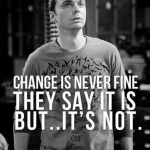Any time leaders try to introduce change into an organization they will be faced with the fear and conflicts of the people involved in the changes. In our series we’ve been talking specifically about digital transformation but it is true for any major shift. If these reactions and resistance to change are not managed they will remain real and present and disrupt the making of those changes.
Dealing with these reactions is one of the most delicate, intangible and crucial aspects of leading and managing change. It is a cognitive challenge and it requires attention at the level of people’s thoughts and emotions.
How can we do that in a systematic and constructive way? Thanks to the depth of analysis and research carried out in a semi-empirical way, Dr. Goldratt was able to identify six levels (or layers) of resistance to change. These levels will depend on the extent of awareness and participation of the people involved. The task for leaders is to identify which level of resistance corresponds with people’s reactions. Then they will be well on the way to solving the problem. Moreover, for every level of (decreasing) resistance there is a Thinking Process Tool that will address and resolve that resistance in a collaborative way. Let’s take a look at those levels:
Level 1: Disagreement about the problem
This is the deepest level of resistance. At this level there is no common agreement about what the problem is that is to be addressed through some form of change. To tackle this level we need to identify the root cause of the majority of negative or undesirable effects that are being experienced. This can be done very effectively and quite fast through the Core Conflict Cloud.
Level 2: Disagreement about the direction of the solution
Once there is agreement about what it is that needs to be changed, there has to be agreement about how the change will be implemented. The direction of the solution is found by identifying solutions (called “injections” in TOC) to the core conflict cloud. This is done by invalidating the assumptions (mental models) that keep people stuck in the core conflict. It allows a shift towards a stage of agreement where it is no longer “you against me because of the problem” but “you and me against the problem”.
Level 3: Lack of agreement that the solution will bring the expected benefits
This level reflects a disconnect between the understanding of change required and the logic that will bring the results. A fully fleshed out solution needs to be mapped out. For this reason we build a Future Reality Tree. This tool gathers together all the “injections” with a supporting logic to prove that the proposed changes will bring results. It will also lead to the identification of further injections that complete the solution. The result is a clear map that becomes a living document shared among those involved in the change process.
Level 4: Fear of negative consequences generated by the solution
People will be sensitive to possible negative implications they perceive for themselves through the implementation of the solution. It is important to identify negative implications early in order to protect the proposed changes from unexpected difficulties, to get buy-in from people who may tend to be nay-sayers and to demonstrate leadership through an ability to listen to relevant objections and incorporate that feedback. The Thinking Process Tool for this is called Negative Branch Reservation.
Level 5: Too many obstacles along the road that leads to change
At this level the solution is much closer to being accepted as reality and the objections are at a very concrete level of obstacles standing in the way, often in the shape of a lack of resources. The people who see the obstacles are very often the very people with the knowledge to overcome them. It is vital to be able to address these obstacles and overcome them. The step to overcome an obstacle is called an Intermediate Objective and all the necessary Intermediate Objectives (IO) can be mapped out on a Prerequisite Tree in a logical order of what needs to be done before another IO can be achieved.
Level 6: Not knowing what to do
When level 5 has been overcome we are in a situation where all that needs to happen is for actions to be taken to achieve the Intermediate Objectives. Even so, at this stage people may freeze. This may be simply because there is not enough clarity on tasks or because not all the objections have been raised. This is a critical phase in terms of leadership and can be greatly facilitated by giving and sharing clear instructions through the use of the Transition Tree.
The Thinking Process Tools promote and reinforce the kind of systemic intelligence needed to create and manage an organization as a whole system. They provide a complete and holistic approach in a continuum from high-level strategy through to detailed step-by-step implementation. They are both the means and the method to create, communicate and share any process of change. They reinforce and cultivate the true involvement of people and are therefore crucial for improving flow in communication which, in turn, enables better flow in every sense.
See also: You Say You Want a Revolution: Where Digitalization is Taking You
Sign up to our blog here and shift your thinking towards broader, systemic possibilities for yourself and your organization.
About the Author
Angela Montgomery Ph.D. is Partner and Co-founder of Intelligent Management, founded by Dr. Domenico Lepore. She is co-author with Dr. Domenico Lepore and Dr. Giovanni Siepe of the forthcoming ‘Quality, Involvement, Flow: The Systemic Organization’ from CRC Press, New York. Angela’s new business novel+ website The Human Constraint looks at how Deming and the Theory of Constraints can create the organization of the future, based on collaboration, network and social innovation.






Leave a Reply